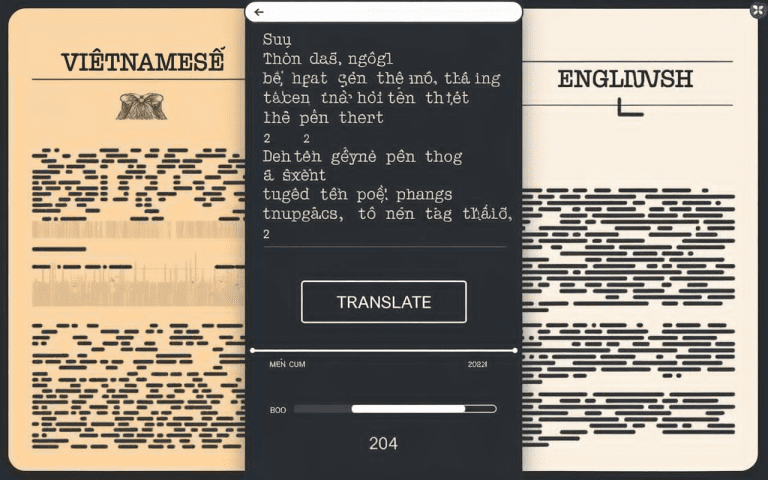English Tagalog Translation Right Grammar Guide Today
Are you having trouble with English to Tagalog translation? This guide is here to help your english tagalog translation right grammar. It will teach you how to communicate well across languages and cultures. Learn the secrets of Tagalog grammar and improve your multilingual skills today.

Key Takeaways
- Almost 90 million people use Tagalog around the world, which helps people from different cultures connect and understand each other.
- TTagalog uses 28 letters based on the Latin alphabet. What makes it special? The way it adds parts to words to change their meanings.
- Over time, Tagalog picked up words from Spanish, Malay, Chinese, and English. It’s like a language that tells the story of all the cultures that shaped it.
- Getting English to Tagalog translations right really matters, especially for companies working with Filipino communities around the world.
- Tagalog grammar can get pretty tricky. That’s why having a good guide makes such a huge difference when you’re trying to learn it.
Understanding the Basics of Tagalog Language Translation
Tagalog runs deep in Filipino life – it’s their national language and has quite a story behind it. These days, with Filipino culture popping up everywhere, more people need solid Tagalog translations. And it’s not just about knowing the words – you’ve got to get how people actually use them to really connect with Tagalog speakers.
Origins and Development of Tagalog
Tagalog has a long history in literature, loved by many Filipino artists. It comes from Austronesian languages, like Malayo-Polynesian and Visayan. Over time, it has also picked up idiomatic expressions and words from Spanish and English.
The Modern Filipino Language Structure
Want to know something cool about Tagalog (or Filipino, as some call it)? It doesn’t have tons of words to memorize, which helps when you’re learning. The tricky part? How the verbs change and how adding bits to words shifts their meaning.
Importance of Cultural Context in Translation
Here’s the thing about Tagalog – you can’t just swap words from a dictionary and call it a day. Those funny sayings Filipinos use and their local expressions? They mean something totally different when you dig deeper. That’s why knowing about Filipino life and traditions helps you nail the real meaning.

“Tagalog isn’t just about words – it shows you how Filipinos see the world. And when you’re trying to translate it? You better know your stuff about both the language and the people who speak it.”
English Tagalog Translation Right Grammar Essentials
If Tagalog isn’t your first language, the grammar might make your head spin at first. It’s one of those languages where words get stuck together and change meaning – kind of like building blocks, but trickier. The affixes in Tagalog can change word meanings and sentence structures. Knowing these grammar rules and lexical equivalence is key for correct English Tagalog translation right grammar guide today.
Tagalog grammar is unique because adjectives come before nouns. This is different from English’s subject-verb-object order. Getting this right can greatly improve your Tagalog translations.
While translation tools can help, they often miss the cultural and nuanced aspects of Tagalog. Using only these tools can lead to translations that are not accurate or natural. To truly master Tagalog, you need to practice and study it deeply. This is the best way to become skilled in English Tagalog translation right grammar guide today.

Tagalog’s verb system is complex, with many forms and moods. Verbs like -um-, mag-, ma-, and mang- have specific meanings. You also have object trigger forms -in-, i-, and -an that show different actions. It’s important to get these right when translating.
“Mastering Tagalog grammar is a journey, but with dedication and practice, the rewards are immense. Accurate translations not only bridge languages but also foster deeper cultural understanding.”
In summary, grammar rules, lexical equivalence, and understanding Tagalog’s unique features are crucial for English Tagalog translation right grammar guide today. By focusing on these areas, you can improve your Tagalog translations. This will help you appreciate the full beauty and richness of this language.
Essential Translation Tools and Resources
In today’s world, having the right tools is key for translating English to Tagalog well. There are many options, from free online platforms to digital learning materials. For enhanced language translation and seamless multilingual communication, tools like Biread can be incredibly helpful, especially for cross-cultural understanding and accurate interpretation.

Online English Tagalog Translation Right Grammar Platforms
Free online translators like Google Translate and Translate King are great for simple texts. They use advanced tech to translate quickly. But, for serious or formal translations, you need human help for the best results.
Digital Learning Materials
Digital resources, like language apps and courses, are very helpful. They cover grammar, vocabulary, and more. This helps learners understand Tagalog better and improve their skills. Using Biread’s bilingual display feature can enhance learning, offering users a side-by-side comparison of the text, which is ideal for understanding contextual meaning and grammar rules in real time.

Audio Resources for Pronunciation
Getting Tagalog pronunciation right is key. Audio resources, like podcasts and videos, are very useful. They help learners get the hang of Tagalog’s sounds and improve their skills.
While tech tools are helpful, they have limits. They might miss the fine details of language. For important translations, it’s best to get a professional translator. They ensure top-notch communication and accuracy.
Mastering Common Phrases and Expressions
Learning common Tagalog phrases is key for understanding different cultures. You know you’re talking to someone who gets Filipino culture when they drop a “Kamusta” instead of just “hi,” greet you with “Magandang umaga po” bright and early, or say “Salamat po” instead of a plain “thanks.” These small touches really show you care. They are also important for basic communication.
Understanding idiomatic expressions and their meanings can improve your Tagalog skills. Phrases like “Yes” (Oo), “No” (Hindi), and “Can you help me?” (Maaari mo ba akong tulungan?) are used every day. They help you navigate local settings.
Practicing regularly and being open to the language helps a lot. Using these phrases in your daily talk can deepen your appreciation for Filipino culture. Tools like Biread, with features such as Learning Mode, help users gain a more natural understanding of idiomatic expressions and contextual language use, creating a deeper connection to Tagalog and other languages.

FAQ
What is the foundation of the Filipino language?
About 90 million people around the world speak Tagalog – it’s what Filipino as a language grew from. Fun fact: it’s actually part of this big family of languages that includes others you might hear in the Philippines, like Cebuano, Ilocano, and Waray.
How has Tagalog evolved over time?
Tagalog’s got quite a history of borrowing words from all over. Hang out with Filipino speakers and you’ll catch Spanish words, Malay phrases, Chinese terms, and plenty of English mixed in. They write it with the same kind of letters we use – just 28 of them make up their whole alphabet.
What is a unique feature of Tagalog?
Tagalog is special because it uses affixes to change word meanings. For example, adding “ka-” to “bata” (child) makes “kabataan” (youth). Biread’s bilingual display can be particularly useful for exploring these unique linguistic nuances, allowing users to see both Tagalog and English translations side-by-side.
How are adjectives used in Tagalog?
In Tagalog, adjectives, or “pang-uri,” are used before nouns. They describe size, color, shape, and texture.
What is the significance of Tagalog in Filipino culture?
Tagalog is key in Filipino culture, with a rich literary tradition. It’s the language of many Filipino poets, authors, and musicians. Its popularity is growing worldwide, thanks to Filipino culture, music, and food.
Why is English Tagalog translation right grammar important?
With more Filipinos moving abroad, there’s a big need for English to Tagalog translation. This is for important documents and to talk to Filipinos effectively. Accurate translations are key for understanding and communication. For everyday translations and improving cross-cultural understanding, tools like Biread can offer accurate interpretation, making language translation easier and more accessible.
What are the challenges in Tagalog grammar for non-native speakers?
If you didn’t grow up with Tagalog, the grammar takes some getting used to. Words change based on what you stick to them, and the way sentences flow is different from English. Like how you put describing words before the things they’re describing. Getting these little details right makes all the difference when you’re trying to translate stuff.
Can machine-based tools replace professional Tagalog translators?
Machine tools can help, but they can’t replace professional translators for important work. Learning Tagalog takes time and effort, but it’s doable with practice. However, for daily bilingual browsing or learning contexts, Biread provides an efficient way to improve language skills and ensure accuracy through AI-driven translation assistance.
What resources are available for English to Tagalog translation?
There are many online tools and resources for English to Tagalog translation. You can find free translators, audio help for pronunciation, and apps for learning. Biread is a practical tool that not only offers bilingual translations but also incorporates features like Learning Mode, helping users grasp grammar rules and idiomatic expressions in real-time. For serious or formal work, human translators are still the best option.
What are some essential Tagalog phrases to learn?
Let me share some Tagalog basics that’ll help you get by. Everyone loves a friendly “Hello” or a “Magandang umaga po” to start the day. “Salamat po” is your go-to for thanks. And trust me, you’ll want to know these too: “Paumanhin” for those oops moments, “Naiintindihan ko” when you’re nodding along, and my personal favorite for beginners – “Hindi ko maintindihan” for when things go over your head. Knowing “Oo” (Yes), “Hindi” (No), and basic questions like “Maaari mo ba akong tulungan?” (Can you help me?) is helpful. Mastering these phrases shows respect for Filipino culture and helps in basic communication. With Biread’s bilingual display, users can quickly refer to these phrases in real time, promoting a deeper understanding of Tagalog and fostering connections across cultures.
Source Links
- Free Translator With Great Features – https://www.freetranslations.org/translate-english-to-tagalog.html
- A Beginner’s Guide To Learning Tagalog Language Fast And Easy – https://languagexs.com/tagalog-language-guide/
- Tagalog grammar – https://en.wikipedia.org/wiki/Tagalog_grammar
- Essential Tagalog Phrasebook & Dictionary (9780804846813) – https://www.tuttlepublishing.com/philippines/essential-tagalog-phrasebook-dictionary
- 67 Free Tools and Resources for Translators – https://www.linkedin.com/pulse/67-free-tools-resources-translators-micael-pinto
Struggling with accurate English to Tagalog translations?
Experience BiRead’s AI-powered bilingual display and master translations today!
Try Biread Free





